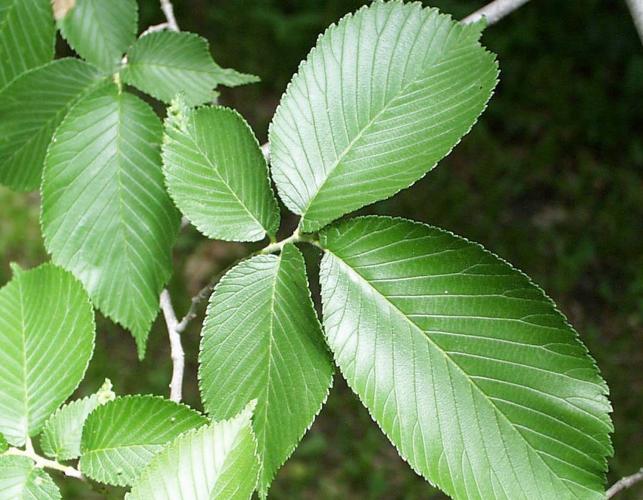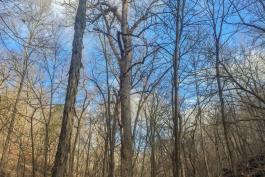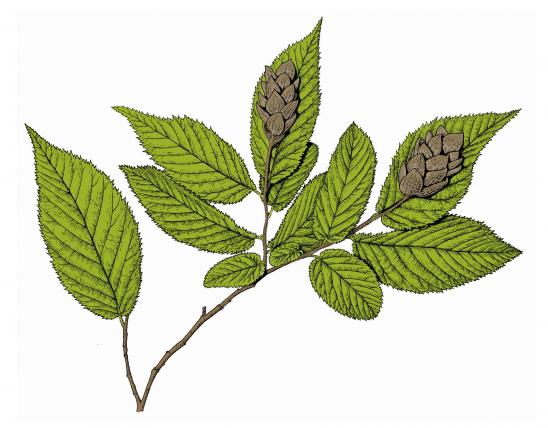
Slippery elm is a medium-sized tree with a long trunk dividing into large branches that form a spreading, open, flat-topped crown.
Leaves are alternate, simple, 4–8 inches long, broadest near the middle; margin with smaller teeth along the lower side of the larger teeth; tip with a long, narrow point; base uneven. Upper surface dark green, very rough, with stiff hairs; lower surface paler, with soft hairs.
Bark is reddish-brown to gray, grooves shallow, ridges long, flattened; inner bark with a sticky sap, slippery when chewed.
Twigs are stout, gray, densely hairy, rough; smooth with age; inner surface slippery when chewed; buds dark purplish- to reddish-brown, hairy.
Flowers February–April, before the leaves, in dense clusters on short stalks; flower about ¼ inch long, green, hairy, petals absent.
Fruits April–June, in clusters; fruit ¼–¾ inch long, seed surrounded by a papery wing; wing reddish-brown, broadest in the middle, notched at the top, smooth; seed solitary, flattened.
Height: to 60 feet.

Except for scattered counties in the Ozarks, slippery elm is found in almost every county in the state.
Habitat and Conservation
Occurs in dry upland or rocky woods and along streams. Slippery elm is a water-loving tree and reaches its largest size on moist, rich soils on lower slopes, stream banks, river terraces, and bottomlands. Although rarely cultivated, slippery elm is an attractive, moderately fast-growing, relatively long-lived tree, providing excellent, heavy shade. Unfortunately, like American elm, it is susceptible to Dutch elm disease and elm phloem necrosis, both of which are fatal.
Human Connections
Tea from the inner bark was used by Native Americans and by settlers for ailments including sore throats, coughs, stomach ulcers, and upset stomach, and for treating external wounds. The inner bark is still used in some sore throat preparations.
Slippery elm is also used for lumber and furniture.
Slippery elm's fuzzy twigs and reddish hairy buds attract attention in wintertime.
Slippery elm's inner bark is reddish and rather slimy, which gives this tree its name "slippery." The redness of the inner bark gives it its scientific name "rubra." Isn't it interesting that both common and scientific names come from characteristics of this tree's inner bark?
Ecosystem Connections
As insubstantial as they might seem, the seeds are eaten by birds, rabbits, opossums, squirrels, and other rodents.
Deer browse the leaves and twigs in the spring.
Insects such as borers, leaf miners, caterpillars, and scales eat slippery elm, too, and insect-eating birds eat them.



































